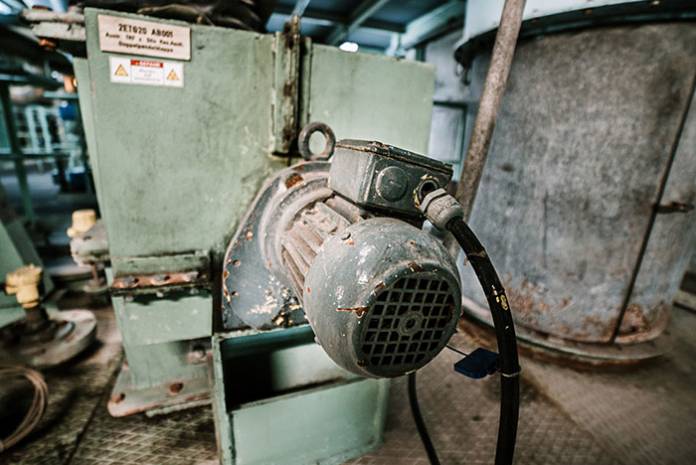
Investing in a good air compressor isn’t the end of it, it’s the beginning. If you want your compressor to run at its optimum working conditions, then a well-planned maintenance routine should be carried out regularly. This way, you will be able to ensure the quality, longevity, and efficiency of the compressor. While maintenance routine might require some time and effort on your part, it’s still very easy to manage. It’s also quite necessary to guarantee that you will be making the most out of the money you have put into your compressor. Ignoring necessary repairs might affect the machine lifespan which consequently can be very costly.
This is why we have collected some easy steps on how to detect that the filters need to be changed and how to change them.
Read The Manual
While the internet may be filled with endless information about air compressors, your compressor’s detailed manual is especially important to read before you decide on any maintenance steps. The manual usually contains easy tips that you can follow in order to extend its lifespan and prevent reckless damages. Another important part of giving a thorough read to this compressor manual is to prevent any chance of voiding the warranty. This means that these tips will not only save you a lot of money, but they will also save you from having to replace the compressor altogether.
Why Should You Change The Filters?
A compressor is a big investment for any business. Making sure that it’s properly maintained will not only save you money, but it will also protect the environment from harmful exhausts. Dirty oil or air filters cause compressors to run far less efficiently than they are supposed to. Keeping these operating conditions for long will eventually cost you a lot of money; regardless of whether your compressor will need repairs to get back to its old condition, or you will have to replace it with a new one.
How To Know That It’s Time To Change The Filters?
Air compressors are usually installed to ensure the quality of the air and to protect the compressor from any debris or dust that might get sucked in. Dust usually eats away at your compressor and causes wear and tear to different elements including valves, oil, and other parts.
Generally speaking, filters should be changed twice a year as a safety measurement. Still, you should inspect for yourself to determine if changing filters is required. Air compressors get dirty from debris and dirt that passes through them to the compressor. Pros at Ablesales say that not changing the filters at this stage can cause the compressor to run harder than it’s used to, to be able to take air in. This eventually wears the compressor out.
Oil filters, on the other hand, require changing when they are covered in oil and oily residue. Dirt, debris, and other impurities degrade your compressor quality and might affect its efficiency. If the problem persists, then you might have to change the whole compressor instead of just the filters.
How To Change Air Filters?
The first step that you need to take care of is cleaning around the filter before removing it. This will prevent contaminants and impurities from entering the compressor intake. This helps in ensuring that the compressor performance or working conditions quality will not be affected. Secondly, before you remove the air filter, you will need to remove the air filter cover retaining nut along with its cover. You should have masking tape or a clean cloth in hand to cover the compressor intake immediately after removing the air filters. This also helps in preventing any residues from going inside the compressor.
The third step is to thoroughly clean inside the cover after you have removed the filter element. All that you need for the cleaning process is a dry clean cloth. Avoid using harsh cleaning products or any flammable solvents. However, if you do, then it’s necessary to make sure that it’s clean from any residues with water. Don’t forget to ensure that it’s completely dry before installing the cover.
After that, you can remove the masking tape or the dry cloth you have used to cover the intake. Don’t forget to ensure that your new filter is flattened out to fit in the intaking house. Usually, filters are round; this is why you have to fit the filter perfectly.
Last but not least, you will need to make sure that everything is clean as a whistle before placing the filter cover over the air filter. Your cover should be then secured with the retainer nut.
Changing Oil Filters
- Oil filters also require constant maintenance and a regular cleaning routine to ensure that they are running at their best. To change oil filters, you will need to start with cleaning any oily residue around the manifold block and the filter. This step, as previously stated, protect your compressor from any contaminants that might affect its efficiency.
- Then, remove the filter in a counterclockwise manner carefully.
- Inspect closely to check whether the threaded nipple has unscrewed the filter or not. If it’s still there, then you will need to remove it with caution to prevent the threads from being damaged. Special products are then needed to coat the threads of the threaded nipple.
- Make sure that the sealing surface that protects the gasket isn’t dirty with any impurities.
- After that, you will need to apply a thin layer of oil to the filter sealing gasket.
- The last step is to ensure that everything is tightened, clean, and in its place.
Investing in a compressor is a big step for any business. To get the most out of your money and avoid wasting any, you should pay close attention to how your compressor is running. Making sure that you stick to a maintenance routine of changing the filters twice a year is essential for your compressor to keep running at its full capacity. Otherwise, you will be risking its performance and quality which might lead to a replacement to be required.











